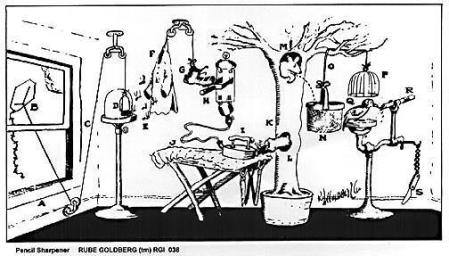
Photo by waywuweii http://www.flickr.com/photos/waywuwei/
It’s not a sad day, but there is some sorrow to it. Today we reach the end of the line. Poor Richard’s Printshop is closing today. And I guess it’s alright to use the name of the franchise now. Most of you know that the shop was an Alphagraphics franchise in Macon, GA.
Poor Richard has found out that negotiating the end of a business is difficult. I had high hopes of managing change and letting my customers know what was going on way ahead of time. Alas, negotiations with prospective buyers precluded that. The end has been a little messy. I’ve left a few things hanging for the first time in nearly 14 years and I’m sure that a few of our customers are wondering a bit right now.
Every ending deserves an old Chinese proverb. I believe that I actually heard one once that suggested a career change every 7 years. We made it almost twice that long and it is definitely time for change. What remains of the printing industry will be very different and Poor Richard doesn’t really regret opting out of the massive tectonic shift.
(If you’ve got Spotify on your computer, now’s the time to turn on Truckin’ by the Grateful Dead).
There are some good memories:
Of people we worked with:
- Oscar, our first pressman, who went through life with Pantone Reflex blue on his nose.
- Doug Titman, a fabulous artist, and wonderful designer who occasionally spent the night on our sofa.
- Deresa, Carole, and Renee who stayed only a short time, but made life much richer.
- Chris and Ricky, who contributed so much during the growth years.
- Joe Middlebrooks – our 60 year old college intern, who didn’t leave until retirement.
- Brian – right hand man until near the end. Good friend, I hope, for years to come.
- Todd, Sharon, and Jamaal – who hung on until the very last. Just can’t tell you how much I appreciate that. Godspeed!
- Jim Fidenza, Mike Boston, and Leo McDonald with Alphagraphics, Inc.; and Kirk Allen, who tried really hard to help as we approached the end of the line.
- Our paper salesmen – Tracy, Tim, and John, who were there for us always.
Of Customers:
- Celeste Murdock Mitchell – who placed the first order and received nearly the very last delivery.
- Penny, Brandi, Jen, Janet, Kathy W., Steve, and Matt – the best designers in Middle Georgia.
- Bright Ideas and HHB – Kathy, thanks for sticking with us so long. Paige and Kendra, we loved working with y’all.
- Barbara Barth – who was, and is, just really funny. Have missed you the past year or so.
- Charlene and Jim at Theatre Macon, Beverly Ford and Mechel McKinley – the kindest people I know.
- Jan, Ruth, Melanie, Marty, Chip, Tony, Amy, Patty, and so many others who came to us with projects year after year after year.
Of Events and Projects:
- Keeping time year after year with Richard Austin and the Antioch Association of Primitive Baptists. I just don’t know why it is that I’m aging so much faster than you!
- Of Mercer projects that came regularly with due dates the week prior to the day the order was received, and how good it was to work with people who lived by their word.
- Dealing with a strange fellow named Moti from NY who wanted to print bonds and currency for the Macon Money game. Thanks, Mechel, for keeping this one straight.
- Moving the business to downtown Macon, without significantly disturbing the drunks in Poplar Street park. Macon, I wish you well!
Enough of that. To our customers and friends, many thanks! What a long, strange trip it’s been. Overall, it was a good ride and I will miss working with many of you (and chuckle a little bit about the rest). If you want to follow along, Poor Richard will be looking for a REAL JOB and will chronicle this in a new blog at richardsalmanac.us.
Life is still grand!



 Posted by poor richard
Posted by poor richard 















